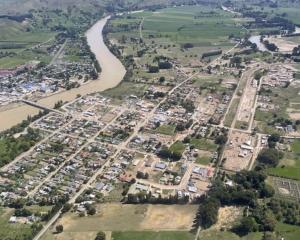In a quiet week for data, the focus this week will be on how the dollar and interest rates react to some key events.
In New Zealand, electronic card transactions will be out this morning, followed by retail figures on Friday.
On Thursday, the BusinessNZ Performance in Manufacturing Index (PMI) will be released, with the market expecting a flat result.
ASB chief economist Nick Tuffley said yesterday the bank had updated its New Zealand dollar forecasts to more fully take into account the expectation of official cash rate cuts, as well as update the forecast for other key exchange rates.
The New Zealand dollar was set to reach a low of US61c early next year.
It would come under further pressure as the Reserve Bank continued to cut the OCR to a low of 2.5% in the second half of this year, he said.
The interest rate market was already factoring in most of the move, although there was still scope for the dollar to fall slightly further from recent levels.
Dairy prices had come under further pressure, softening New Zealand's terms of trade.
New Zealand's economic growth would slow over the rest of the year, reinforcing the dollar downtrend, before recovering next year, Mr Tuffley said.
The US dollar was set to remain firm and strengthen further as low commodity prices generated a lift in the US terms of trade and markets adjusted to the prospect of the Federal Reserve lifting interest rates in December.
While the risks were balanced around the exact timing of the first Fed rate rise, the prospect of an actual Fed interest rate rise was in contrast to actual Reserve Bank interest rate cuts, he said.
ASB expected the Australian dollar to fall further, to a low of US70c early next year.
Australia's economy would experience an extended period of below-trend economic growth and the terms of trade would remain under pressure from expanded commodity supply and slower demand from China's slowing property sector.
The New Zealand dollar was expected to trade at A87c or A88c for the next 12 months, Mr Tuffley said.
Interest rates were unlikely to move much this week as the economic data release calendar became much quieter following last week's event-heavy schedule.
''For the Reserve Bank, data released between now and the September Monetary Policy Statement is unlikely to change the outcome for the September decision. As such, local rates volatility is likely to be fairly minimal.''












